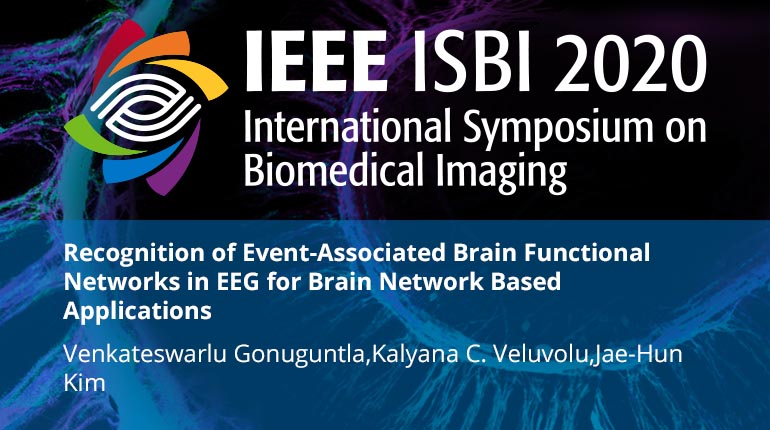
Already purchased this program?
Login to View
This video program is a part of the Premium package:
Recognition of Event-Associated Brain Functional Networks in EEG for Brain Network Based Applications
- IEEE MemberUS $11.00
- Society MemberUS $0.00
- IEEE Student MemberUS $11.00
- Non-IEEE MemberUS $15.00
Recognition of Event-Associated Brain Functional Networks in EEG for Brain Network Based Applications
Network perspective studies of the human brain are rapidly increasing due to the advances in the field of network neuroscience. In several brain network based applications, recognition of event-associated brain functional networks (BFNs) can be crucial to understand the event processing in the brain and can play a significant role to characterize and quantify the complex brain networks. This paper presents a framework to identify the event-associated BFNs using phase locking value (PLV) in EEG. Based on the PLV dissimilarities during the rest and event tasks, we identify the reactive band and the event-associated most reactive pairs (MRPs). With the MRPs identified, the event-associated BFNs are formed. The proposed method is employed on `database for emotion analysis using physiological signals (DEAP)' data set to form the BFNs associated with several emotions. With the emotion-associated BFNs as features, comparable state-of-the-art multiple emotion classification accuracies are achieved. Result show that, with the proposed method, event-associated BFNs can be identified and can be used in brain network based applications.
Network perspective studies of the human brain are rapidly increasing due to the advances in the field of network neuroscience. In several brain network based applications, recognition of event-associated brain functional networks (BFNs) can be crucial to understand the event processing in the brain and can play a significant role to characterize and quantify the complex brain networks. This paper presents a framework to identify the event-associated BFNs using phase locking value (PLV) in EEG. Based on the PLV dissimilarities during the rest and event tasks, we identify the reactive band and the event-associated most reactive pairs (MRPs). With the MRPs identified, the event-associated BFNs are formed. The proposed method is employed on `database for emotion analysis using physiological signals (DEAP)' data set to form the BFNs associated with several emotions. With the emotion-associated BFNs as features, comparable state-of-the-art multiple emotion classification accuracies are achieved. Result show that, with the proposed method, event-associated BFNs can be identified and can be used in brain network based applications.
 Cart
Cart Create Account
Create Account Sign In
Sign In





